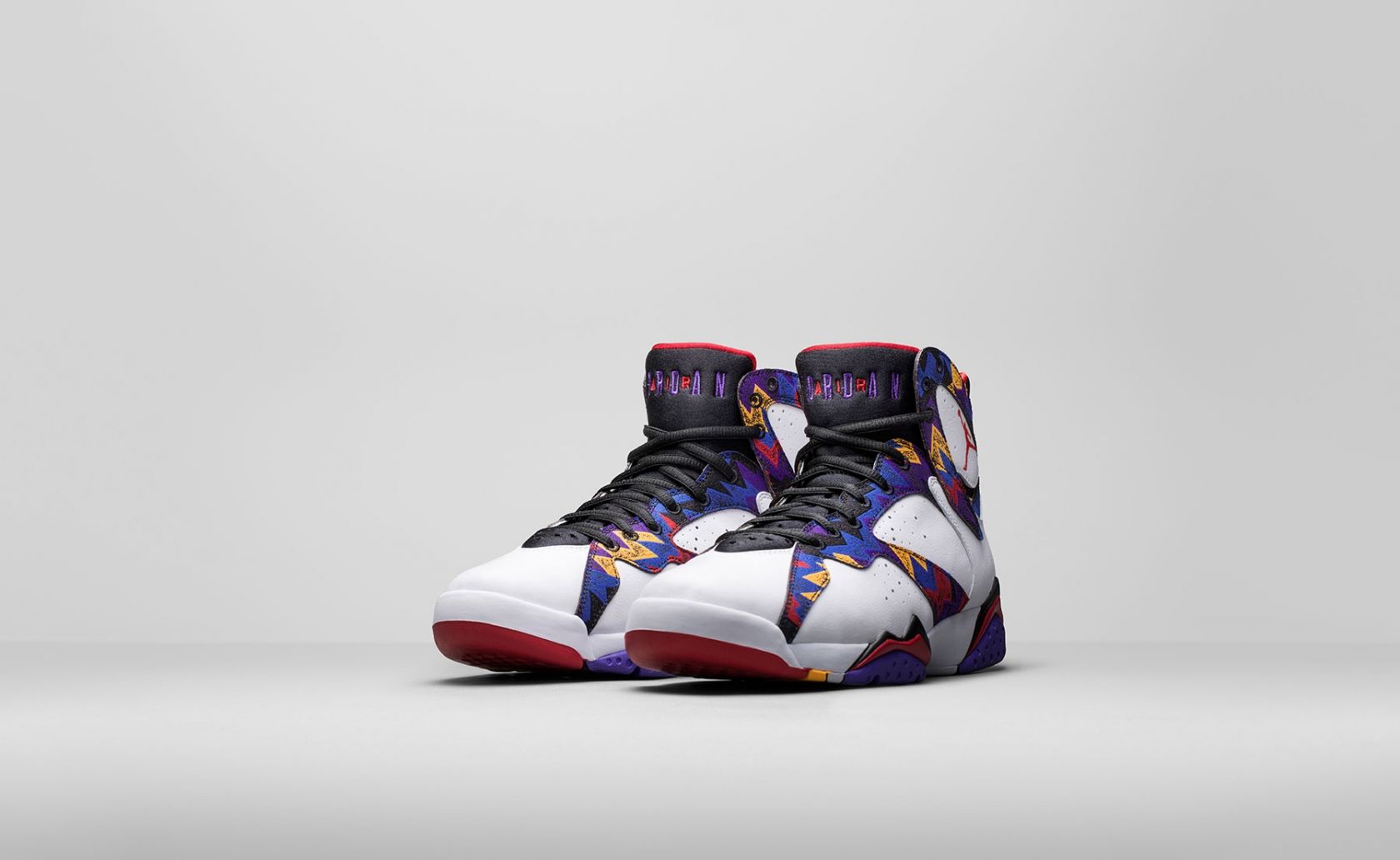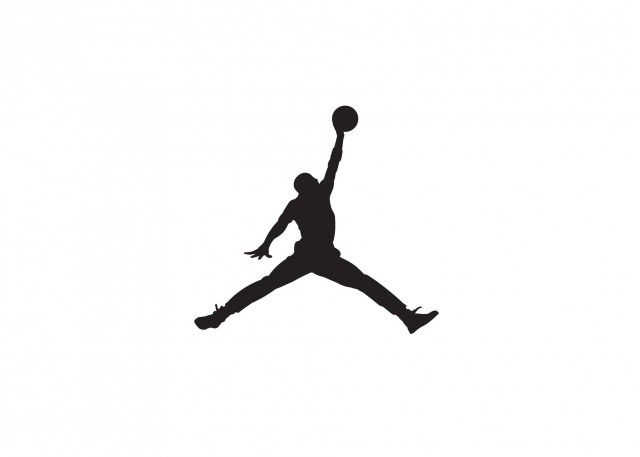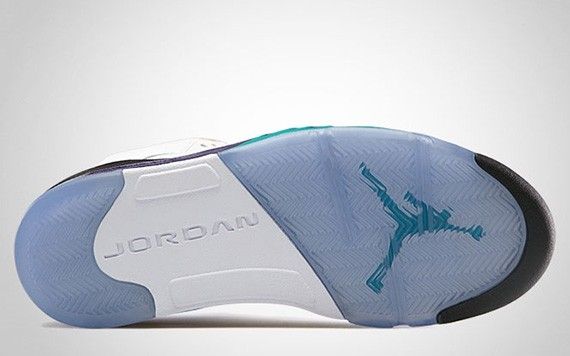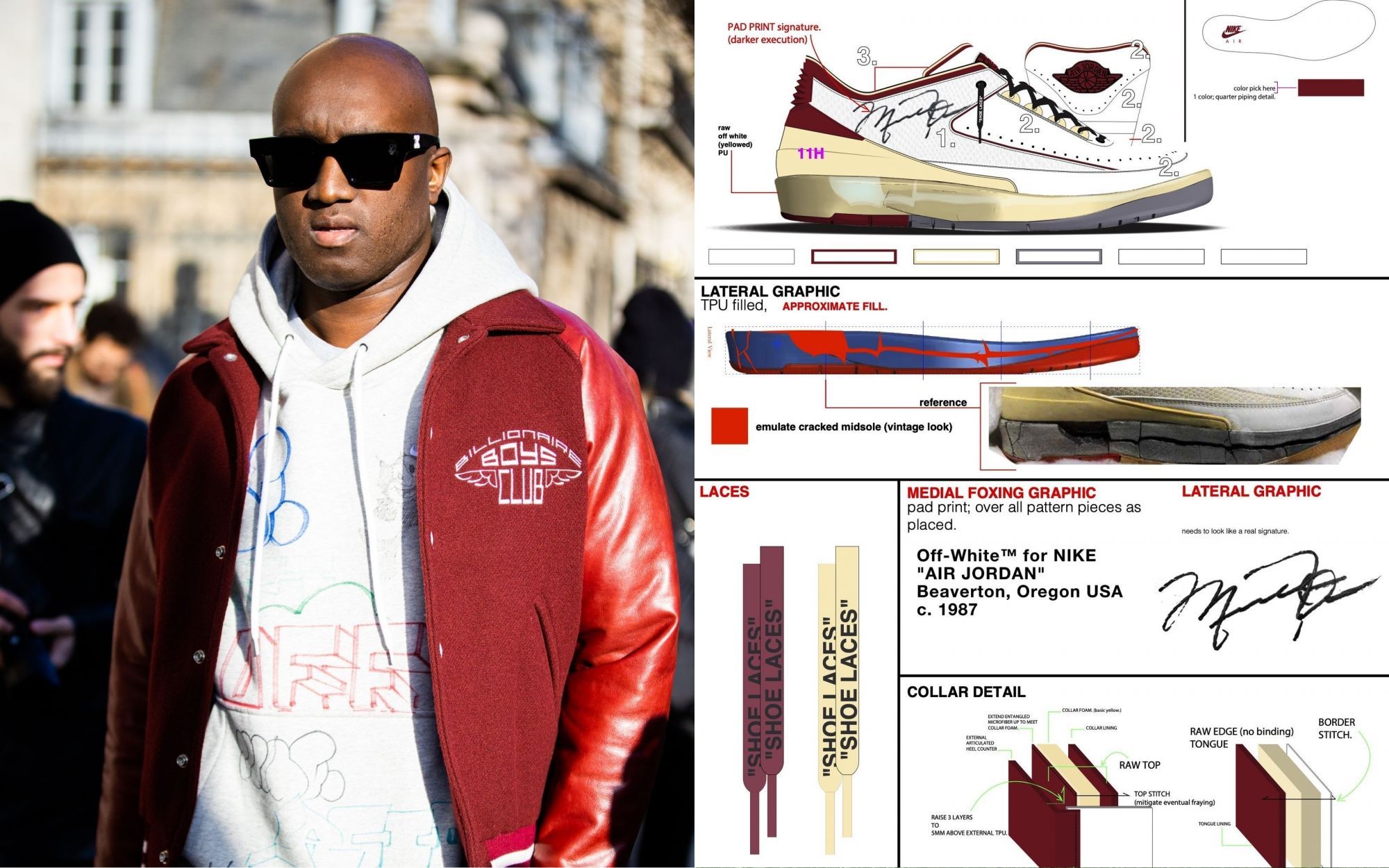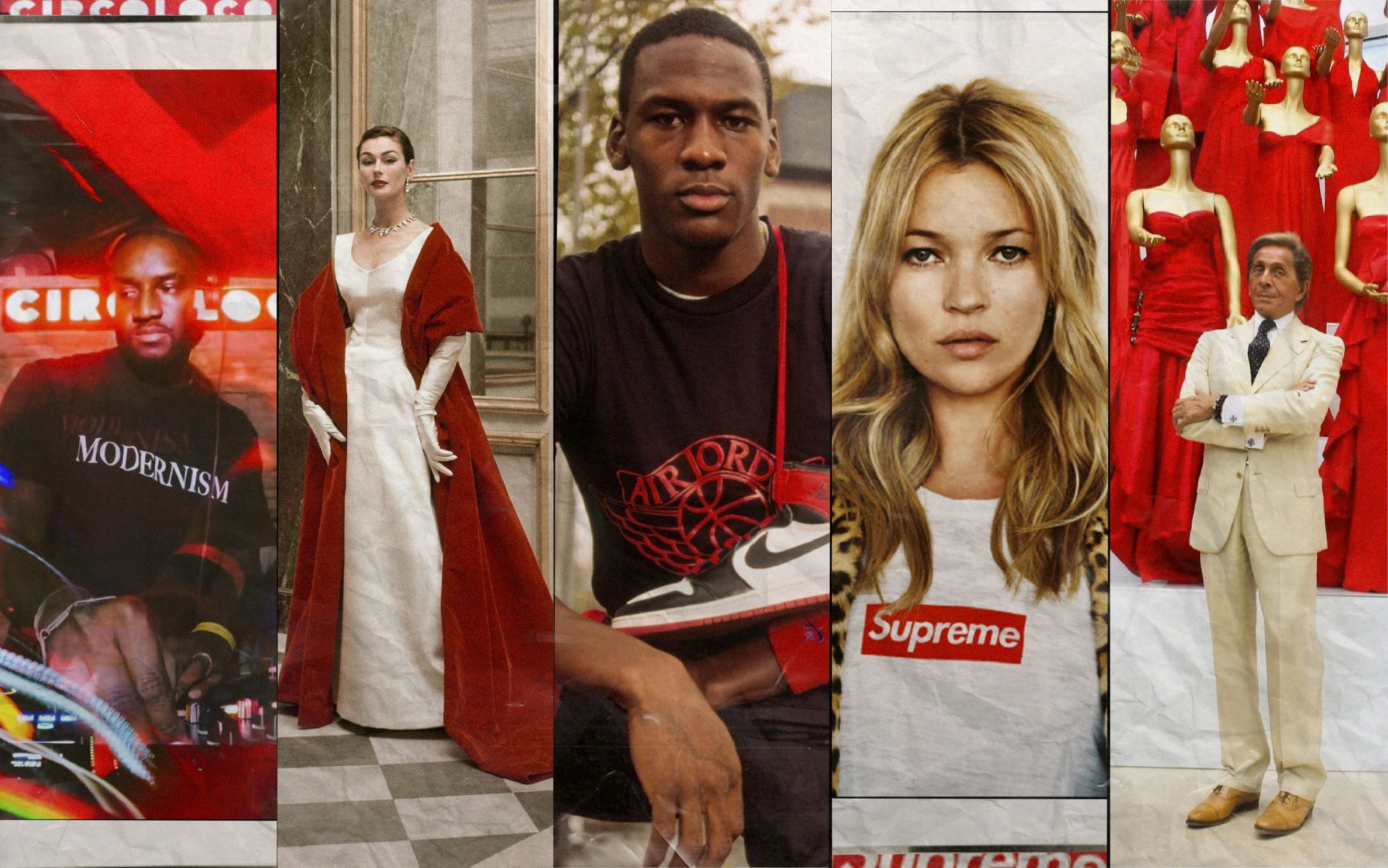
30 things you didn't know about Jordan Brand We are Jordan
The world’s largest and most exciting outdoor basketball tournament returns next month, when the QUAI 54 World Streetball Championship takes place in Paris from June 13-14th, 2015.
Hosted by Jordan Brand and Nike Basketball, this celebration of the game is famed for explosive play, a spectacular setting, and a lineup of the very best hoops talent.
1. CARS WERE PART OF THE STORY FROM THE START
Michael Jordan has always been an automobile enthusiast. That passion has served as inspiration for the design of several Air Jordan installments, such as the Air Jordan XIV, as well as the driving force behind a successful foray into motorsports in 2004. The young athlete even asked for a car as part of his original deal with Nike back in 1984. After lengthy conversations, the contract was signed and Jordan got the car. He’s built up that collection significantly since.
2. WHEN MICHAEL JORDAN SAW THE ORIGINAL AIR JORDAN, HE WAS HESITANT
While the original Air Jordan’s aesthetic has defined sport and street culture in the years that followed, Michael Jordan’s reaction to seeing a team colored version of this first signature shoe was less than enthusiastic. Having worn a more somber white and pale blue combination before, the design was a shock to the system that led him to exclaim, “I’m not wearing that — I’ll look like a clown.”
Jordan’s discretion needs to be taken into context. At the time of the Air Jordan’s release, whites, plain greys and team colored hits on the branding were generally as far as it went. Footwear on court was conservative, at best, and months ahead of the Dunk’s college colors, the notion of boldly colored home and away shoes was a significant shift from the norm.
3. JORDAN WANTED BIGGER SHORTS AT THE VERY BEGINNING OF HIS CLOTHING LINE
Michael Jordan is credited with altering the length of the basketball short by setting a trend in the late 1980s that resulted in only the stubborn few opting to show thigh during games. He specifically rejected short shorts in early conversations about his signature apparel line for Nike. The shorts hit shelves with an extra inch or so on the leg — high by today’s standards, but a nudge into a completely new look for the sport that would turn into a Jumpman size leap in years that followed.
4. THERE WAS A JUMPMAN LOGO BACK IN 1985 — IT WAS CALLED THE JORDAN WRAP JUMPER
The well-documented Nike photoshoot of Michael Jordan in his airborne, iconic pose predates the Jumpman logo’s appearance on a shoe by several years. Back then, the wings logo was Jordan’s calling card. What’s less documented is a variant’s appearance on an item of apparel in 1985 — the image was called the Jordan Wrap Jumper and appeared on a t-shirt. It was more detailed than the 1988 incarnation, and it faced the opposite way, but it was the genesis of something that would prove much more recognizable.
5. MICHAEL JORDAN VISITED PARIS, LONDON & BROKE A BACKBOARD IN ITALY BACK IN 1985
Ahead of his second professional season, Michael Jordan went on a promotional tour with Nike across Europe during the summer of 1985 that, among other cities, included stops in London and Paris. During an exhibition game in Trieste, Italy, Jordan shattered a backboard with one of his trademark dunks. That explosive act has been commemorated in a special colorway of the Air Jordan I.
6. THERE WAS A JORDAN I/II HYBRID BETWEEN THE RELEASE OF EITHER SHOE
The idea of a 1.5 edition or hybrid might seem like a distinctly modern approach to the Jordan Brand archives, but between the first Air Jordan and the Air Jordan II, a custom shoe bridged the gap. After Michael Jordan broke a bone in his foot in October 1985, a special version of this shoe, that would fuse the Jordan I upper with the extra cushioning and close-to-the-ground feel of the Jordan II sole, was created. With the shoe intended to ease him into the sequel, Jordan would return in the playoffs to set a record in April 1986, scoring 63 points in a single game.
7. THE AIR JORDAN II WAS A PRODUCT OF EUROPE — MADE IN ITALY & USING SPANISH TECHNOLOGY
The Air Jordan II was a unique shoe. This vast visual departure from the original Air Jordan was due to European influences. While it was designed in America, the shoe used new rubber manufacturing techniques pioneered by a Spanish company and featured a luxurious leather upper that was a product of Italy. This premium Italian-made performance product reflected Jordan’s personal style at the time, but it also broke ground with the absence of a swoosh and debut of new internal innovations like the Dynamic Fit straps present in later Air Jordan designs.
8. THE JUMPMAN WAS FIRST USED IN 1988 TO GIVE THE LINE A HIGH-END FEEL IN LINE WITH HIS MORE SOPHISTICATED PERSONAL STYLE
By 1988, tailored suits had become as big a part of Michael Jordan’s wardrobe as warm-up suits. The luxury feel of the Air Jordan II created a basis that Tinker Hatfield’s Air Jordan III would build on. Jordan’s more sophisticated personal style and love of designer Italian and American brands led to the introduction of the redesigned, more minimal Jumpman logo.
9. THE AIR JORDAN III ONCE HAD THE WORKING TITLE OF THE AIR JORDAN REVOLUTION
Some of designer Tinker Hatfield’s early Air Jordan III sketches called the shoe the Air Jordan Revolution. With Hatfield designing the Air Max — led by the Revolution ad campaign — and the Air Revolution basketball shoe that brought Visible-Air to basketball around the same time, a little crossover was inevitable. Given that the Air Jordan III was a revolutionary design that altered basketball’s aesthetic forever and started the groundbreaking relationship between Hatfield and Jordan, the Air Jordan Revolution would have served as a fitting title.
10. THE ELEPHANT PRINT WASN’T JUST ADDED TO THE AJIII TO LOOK GOOD — IT PERFORMED
The leather used on the Air Jordan III gave the basketball shoe a new sense of luxury that would define the Air Jordan line, but it wasn’t just added to look good. An insight from Jordan himself had Tinker Hatfield looking for the right material for a masterpiece. Jordan wanted his shoes to look good during a game and liked to put on a new pair for each contest. Along this quest for fresh footwear, a break-in period for each pair was not an option. Hatfield felt that a treated elephant print leather with a pre-wrinkled feel — something that hadn’t been used on a basketball shoe before —would be easy to wear out of the box and keep up its appearance during the punishment Jordan put it through. It turns out that he was right.
11. THE FLIGHT CLUB FAN CLUB SIGNIFIED A NEW ERA OF AIR JORDAN
In 1989, the Air Jordan would receive the Flight branding that made Michael Jordan the figurehead of the new Nike Flight line, aimed at aerial athletes. After the release of the Air Jordan IV, Nike rebranded their Air Jordan Fan Club the Air Jordan Flight Club — a much-loved title for the legions obsessed with His Airness. Several issues of the Flight Club newsletter were published, complete with pages of special member’s merchandise that included apparel and accessories like umbrellas and water bottles. The Flight Club would evolve for a digital audience via Jumpman23.com in 2007.
12. THE JORDAN V’S TRANSPARENT SOLE WAS INSPIRED BY THE NIKE MAG
Nowadays, the icy sole is the finishing touch that makes many shoes a must-have and a fixture of many connoisseurs’ favorite designs. Before the Air Jordan V, it was a lot less commonplace. Tinker Hatfield took inspiration for the clear sole on the Air Jordan V from the clear parts of the self-lacing Nike Mag design he’d recently created for a Hollywood blockbuster. The see-through sole and reflective tongue would erupt when camera flashes hit it, elevating its wearer's increasing stardom with a new standard of visibility.
13. SEVERAL AIR JORDANS WERE INSPIRED BY EUROPEAN CAR DESIGNS
Italian car design, with its fluid lines and sense of pure power and speed, was the perfect muse for Air Jordan concepts. It captures Michael Jordan’s game, plus his off-court love of automobiles. Looking closely at several of Jordan’s shoes, from the spoiler-like heel tab on the Air Jordan VI to the ventilation and sleekness of the XIV and XVIII, specific luxury models and supercars have inspired a number of Michael Jordan’s signature shoes. When members of Jordan’s Motorsports team received their own special versions of shoes like the Air Jordan IV in 2006, the connection between basketball and racing on two or four wheels was reinforced.
14. THE BATBOOT IN BATMAN RETURNS INCORPORATED THE AIR JORDAN VI
Just in case Michael Jordan’s real-life superhero status wasn’t enough, Tinker Hatfield assisted another hero when he designed Batman’s “Bat Boots” for the 1992 sequel, Batman Returns. Having applied an Air Trainer to Batman’s outfit for the original movie, Hatfield knew what the iconic crime-fighter needed, so the Air Jordan VI was incorporated into the very special shoe.
15. THE AIR JORDAN VI’S CLEAN TOE WAS INSPIRED BY JORDAN’S ITALIAN SHOES & WAS THE START OF A RECURRING THEME
Michael Jordan’s love of crafted Italian blucher shoes was the driving force behind his request to Tinker Hatfield. He wanted a plain toe. This was easier said than done as basketball shoes at the time incorporated an extra panel for reinforcement during games and practice. To manufacture this performance design was a significant challenge, but the Air Jordan VI premiered the unencumbered toe that –barring an extra overlay on the Air Jordan IX – become a recurring element on subsequent entries in the series.
16. THE AIR JORDAN VII USHERED IN AN ERA OF JORDANS WITHOUT A SWOOSH
With its African-inspired patterns, unique use of shapes, and cutaway at the ankle, the Air Jordan VII was an incredibly bold design. It made such a statement that the Nike Air branding was removed from the shoe entirely, minus the sock liner and packaging — the bravest departure since the Air Jordan II excised the classic swoosh. That decision didn’t come easily, but Tinker Hatfield felt that it was time to let the Air Jordan line fly solo. In 1992, the Air Flight Huarache and Air Raid hit the court without overt traditional logos, with confidence that the design did the talking.
17. JORDAN NEVER WORE THE IX AS A BASKETBALL SHOE, BUT IT’S IMMORTALIZED ON HIS FEET IN STATUE FORM
The Air Jordan IX arrived just as Michael Jordan had announced his retirement. While Jordan never got to put them through their paces on the court, Tinker Hatfield and Mark Smith’s design got its game time on the pitch in cleated form during his brief baseball career. Jordan Brand athlete Derek Jeter also laced up a pair, while a new wave of basketball players ensured that the IX hit the hardwood. When Michael Jordan was immortalized as a statue in Chicago on November 1, 1994, the shoe on his foot was the Air Jordan IX, taking time-frozen flight in bronze and black granite.
18. THE AIR JORDAN X BRIEFLY HAD A DIFFERENT TOE
Michael Jordan was always watching. The Air Jordan X was released during his first time out of the professional game, and Tinker Hatfield was keeping the dream alive. Despite Jordan’s plain toe request, Hatfield decided to add a simple tip to the toe. When Hatfield showed Jordan the shoe, he made his disdain for the tip heard, so the team tiptoed back to the drawing board, and it was swiftly edited. However, it wasn’t jettisoned fast enough for an initial batch that hit store shelves. Every subsequent edition of the tenth Air Jordan left out the controversial tip.
19. THE LAUNCH OF THE AIR JORDAN RETRO PROGRAM COINCIDED WITH JORDAN’S FIRST RETIREMENT
For a minute, it seemed like it was really over. Michael Jordan was out the game and doing what he loved. Fans knew that he had more to give and kept the faith, but in the summer of 1994, Nike would start reissuing some iconic Air Jordan moments. Some people embraced them, while others were still looking to the next chapter. When Jordan returned to the game with an, “I’m back!” announcement in March 1995, the emphasis returned to the new. After Jordan’s second retirement in early 1999, the retro program took shape again — embraced by a new collector community and making a bold decision to include new Retro+ colorways with Jumpman branding.
20. THE AIR JORDAN XI TOOK DESIGN CUES FROM CONVERTIBLE CARS, AN AIRPORT, A LAWNMOWER & JAPANESE BASEBALL CLEATS
The Air Jordan XI is a fan favorite, but also a shoe with multiple inspirations. Taking Michael Jordan’s clean toe request to its limit with the sheen of patent leather, the blend of gloss and ballistic nylon textures emerged through Tinker Hatfield’s ever-eclectic eye for design. Fittingly, a pair of Japanese baseball cleats in patent leather showed him the once-formal leather’s potential to perform, while convertible cars, a cloth-topped airport and a lawnmower — bringing a tactile yet beautiful appearance to an everyday object — drove the look. A design classic was born.
21. SPIKE LEE IS ON RECORD AS SAYING THAT HIS FAVORITE JORDAN IS THE XI
While Mars Blackmon wore the Air Jordan I and made appearances in Air Jordan marketing from the III, to Michael Jordan’s final retirement, and up to the XX, Spike Lee has gone on record several times as saying that the Air Jordan XI is his favorite chapter. Mars would probably approve.
22. THE AIR JORDAN XII WAS PARTIALLY INSPIRED BY WOMEN’S SHOES
The Air Jordan XII is a shoe that defines a key part of Michael Jordan and the team’s second three-peat. Not only is it a unique design, but it is the model that was on Jordan’s feet when he overcame sickness to score 38 points on June 11th, 1997. Embodying its namesake’s unbreakable confidence, the Air Jordan XII was the first Air Jordan silhouette to incorporate Zoom Air cushioning that took its sophisticated looks from women’s footwear. Their unorthodox sense of class was Tinker Hatfield’s key inspiration this time round.
23. MICHAEL JORDAN’S ‘BLACK CAT’ NICKNAME EMERGED IN THE MID 1990s
In the mid 1990s, Michael Jordan’s close friends, aware of his ultra-competitive tendencies when it came to any sport, began calling him “black cat” for his panther-like stealth and attack capabilities. Tinker Hatfield wasn’t aware of that when he started sketching the Air Jordan XIII, but the big cat became his inspiration. The shoe’s deadly feline inspired whisker-like detailing, paw print outsole pattern and holographic eye were inspired by Jordan’s ability to be the court’s apex predator when it came to any opposition.
24. IN OCTOBER 1997, MICHAEL JORDAN PLAYED IN PARIS
Just ahead of the 1997/98 season’s start, Michael Jordan played with his Chicago team for a championship in Paris. With teams from across Europe, North America and South America participating, the Chicago based team beat the home team and Greek representatives to be crowned champions.
25. THE FIRST NON-BASKETBALL JORDAN BRAND SIGNATURE SHOE WAS THE JUMPMAN SUPER FREAK FOR RANDY MOSS IN 2000
In 1997, the release of the Jumpman Pro model, to accompany the established signature series, signified the start of Jordan Brand. With a roster of young players on board from the start that included Ray Allen, the brand would evolve to cater to other sports as well. The launch of the Trunner line took the Jumpman to training, but it would be the Jumpman Super Freak that really hinted at Jordan’s ambitions for the company and serve as the first non-basketball signature shoe, created with record-setting wide receiver Randy Moss in mind.
26. THE JORDAN BRAND CLASSIC TOURNAMENT BEGAN IN 2002
Since its first tip-off in 2002, the Jordan Brand Classic has been the definitive showcase for high school hoops talent. Each year, JBC fans get a glimpse of future basketball greatness. Amar’e Stoudemire was named MVP in the first game, and recipients over the years have included Dwight Howard, LeBron James, Kevin Durant, Kyrie Irving and Jabari Parker. In 2015, with help from the first female basketball player to join the Jordan Brand, Maya Moore, the Jordan Brand Classic held its first-ever Girls’ game.
27. THE AIR JORDAN XVII CAME WITH A PERFORMANCE OF A SONG INSPIRED BY THE SHOE
Music has been intertwined with the Air Jordan line since the start. The shoes have been on the feet of a who’s who of iconic acts since day one, but the Air Jordan XVII made the connection more literal. The XVI had taken inspiration from a marching band, but the XVII was more of a solo affair. Michael Jordan’s game was a masterclass in inspiration, and the musical notes on the shoe were a completely new composition. With its metal case packaging, the shoe was an experience, and the CD added sonic depth, turning the notes into a performance of a track entitled, ‘The Greatest’.
28. THE JORDAN BOXER FOR ROY JONES, JR. RELEASED IN 2003
Having worked his way up from light middleweight to heavyweight and earned his stripes in each division, Roy Jones, Jr. is considered one of the finest fighters of his generation. With his skill, power and tenacity, Jones, Jr. was an early signing to Jordan Brand as the brand expanded into boxing. Jones, Jr.’s signature shoe was the Jordan Boxer, a boxing boot with an outsole that borrowed the Air Jordan X’s sole, and incorporated a list of the athlete’s lofty achievements etched into it.
29. THE AIR JORDAN XX’S STORYTELLING WAS INSPIRED BY TINKER HATFIELD VISITING A TRUMPET MAKER
There are a lot of striking features on the Air Jordan XX design that reunited Michael Jordan and Tinker Hatfield for a 20th anniversary celebration. The floating ankle strap is one of the immediate details, but the intricate laser etching by Hatfield and Mark Smith on the middle strap is equally eye catching. Each part of the shoe tells the story of Jordan’s life, career, family, friends and personality. Always looking to less obvious sources for inspiration, Hatfield had visited a master trumpet maker prior to the design process and saw how he told stories for his client base of musical legends through sheer craftsmanship. Once again, jazz had played a role in the series.
30. THE FIRST JORDAN BRAND COLLABORATION WAS WITH UNDEFEATED IN 2005
It could be argued that every Jordan shoe has been a collaboration given the tight-knit creative contribution Michael Jordan brought to so many of the shoes; but none the less, outside brand collaborations with the brand were very rare. However, in 2005, Jordan Brand teamed up with Los Angeles-based boutique Undefeated to create a very special militaristic version of the Air Jordan IV. Taking appropriate inspiration from the colors of a flight jacket, a mere 72 pairs were made, cementing it as a classic shoe and a classic collaboration.
31. JORDAN BRAND STARTED SPONSORING THE QUAI 54 TOURNAMENT IN 2007 & RELEASED THEIR FIRST SPECIAL EDITION SHOE IN 2009
Taking place in Paris each summer, Quai 54 tournament began in 2002 and has become one of the world’s biggest showcases of streetball and the cultures that connect to it. With a global roster of competing teams, attendance has grown to over 15,000 fans. Nike Basketball has been involved since the start, but in 2007, Jordan Brand began their co-sponsorship role. In 2009, a special Quai 54 Air Jordan I was available for the lucky few, followed by a special Jordan IX, Jordan V and Team ISO 2 in subsequent years.
32. JORDAN BRAND SIGNED ITS FIRST FEMALE ATHLETE APRIL HOLMES — A RECORD-BREAKING AMPUTEE RUNNER — IN 2008
Jordan Brand’s first female athlete signing was a sprinter who embodies the team’s spirit of excellence and determination. April Holmes lost her leg in early 2001, but has gone on to win medals on a global stage in both Greece and Beijing. Turning steel will into gold, Holmes has broken multiple records and continues to inspire and motivate.











































